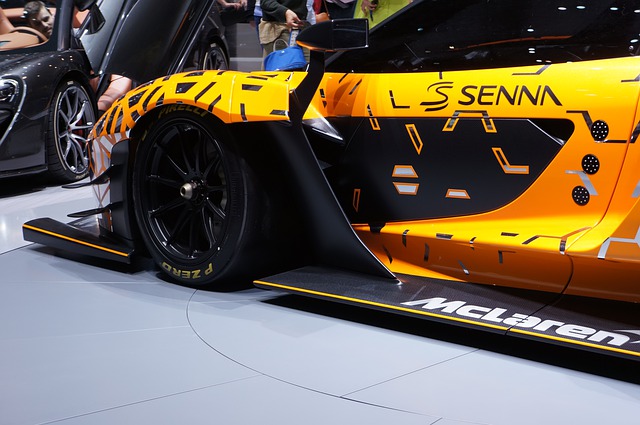Named after legendary Brazilian Formula 1 driver Ayrton Senna, the McLaren Senna GTR is a car that, for all intents and purposes, shouldn’t actually exist: it’s purposefully designed for the track, but it’s banned from competition, while its racing design and engineering means it’s also banned on public roads.
The base-model, simply called the McLaren Senna, was originally unveiled in 2017, with the recent iteration, the McLaren Senna 2020 (car manufacturers have very limited creativity in naming) was built with the same mindset as the GTR, that is, it’s designed to win races. However, while the base model could compete in races, it’s not the most practical choice. Same thing with driving it on public roads: yes, the base model McLaren Senna 2020 is street legal, but its lack of cargo space and ridiculously loud, obnoxious, bellowing, and sweet engine note also makes it impractical for, say, dropping your kids off in preschool. Oh, and the starting price is a cool $1 million.
So, who is the McLaren Senna for?
Simple: car enthusiasts. Listen: I agree with Jim Jefferies when he said that gun owners should be allowed to want and collect guns simply because they want it. And I think it’s the same for cars. But just like the reasoning behind owning firearms shouldn’t go beyond “I want it”, it’s the same for cars like McLaren Senna. If you’re going to buy it, don’t fool yourself into thinking that it’s a great investment (even though its limited production means that it actually is a very good investment) or that it’s great for racing (even though its design and engineering means that it kind of is) or that it’s practical (ok it’s not). Be honest with yourself: you want the McLaren Senna because it’s cool. That’s it, there are no practical or even racing reasons to own it. But you still want it, and that’s ok, we don’t blame you.
A Quick Glance at the McLaren Senna 2020
We’re not going to go through the McLaren Senna GTR (that’s an entirely separate article altogether); instead, we’re going to take a look at the street-legal base model, if only to underline the idea that, if you’re going to get a McLaren Senna, you might as well go for the GTR version and just race it at tracks with your other millionaire friends.
The McLaren Senna has a staggered wheel layout, which means that the front wheels have slightly smaller rims (19-inches) than the back wheels (20-inches). This gives the McLaren Senna a sporty, aggressive, and most importantly, aerodynamic, body that helps you go zoom-zoom in the shortest amount of time possible: 0-60mph in just under 3 seconds. Why you need this much speed and power, I will not ask: if you want it, treat yo self, playah.
Both the base and GTR models of the McLaren Senna come with these massive and, frankly, obnoxious wing spoilers. Which isn’t to say that it’s ugly: the various angles, vents and intakes of the sheet metal gives the Senna this gemstone-like quality. Basically, every visual aspect of the McLaren Senna was created with both aesthetic and functionality in mind (that functionality being: more speed).
It comes with aerodynamically-optimized headlights that have 21 LEDs in each lamp, 4 of which are dedicated to the main beam while another 4 are dedicated to the high beam. True to McLaren’s vision of applying advanced tech into their cars, the Senna’s headlights are adaptive, with 12 of the 21 LED’s in each headlight adjusting themselves depending on external lighting factors.
The base model, because it wants to fool you into thinking it’s a family-friendly car when really it’s just a rich hobbyist’s dream, comes with airbags and infotainment options. Not that you’ll need the latter when you’re barreling down your cul-de-sac at 100mph so you can get your kid to their piano appointment in under 2 minutes flat. Both these options are, obviously, missing from the GTR version.
Both the base and GTR models do not come with climate control as a means to reduce curb weight; however, if you’re buying the base model for sensibilities sake, McLaren does offer climate control installation at no extra cost.

Under the Hood of the McLaren Senna 2020
Naturally, the base McLaren Senna is powered by a monster twin-turbocharged 4.0-liter V-8 that pumps out almost 600 lb/ft of torque and around 789 horses. The GTR version adds an extra 25 horsepower because it can.
Both the GTR and the base model come with a dual-clutch, seven-speed automatic transmission that sends all the engine’s will for break-neck speeds to the rear wheels. And it accomplishes this with no problem: again, the McLaren Senna was built for it, with track times showing the base model capable of 0-60mph in 2.8 seconds. The base model also comes with a race mode (obviously) which allows drivers to lower the suspension: 1.5 inches down the front, 1.2 inches in the back, just to give you a little more oomph when you’re at the private race track you’ll have to go to just to race this monster. The base model’s racing mode also allows the car to switch its dampers, again to give you more zoomies.
Yes, the McLaren Senna goes ridiculously fast, but it can also stop ridiculously well: track tests brought the base model from 70mph to a complete stop in just 136 feet, impressive for a bullet that’s masquerading as a car.
Also, all this power comes with a lot of noise. Like, loud: in between the engine roar, the car tires, and the wind rush, noise levels inside the cabin can become unbearable at around 99 decibels. But, then again, if you’re buying a McLaren, that’s pretty much a given.
Other, Non-racing Things the McLaren Senna has to Offer
If you’re buying a McLaren for fuel efficiency, I just have to say you’re not a very clever person, but if you must know, the 2020 McLaren Senna has around 14mpg efficiency for city driving, and 18mpg efficiency for highway driving. You’re not going to save gas anytime soon, but hey, it’s better than the fuel efficiency of a Bugatti Chiron (9mph in city driving, 14 at highway speeds).
Both the GTR and base models come with dihedral doors that open forward and upward. Inside the McLaren Senna are two bucket seats, one for the speed-happy driver, and one for a very lucky (albeit probably terrified) passenger. The seats come with three possible padding thicknesses; after all, if you’re attempting to go warp speeds on a track, you should at least be comfy!As for cargo space, there’s a high shelf that sits directly behind the driver and the passenger. It can accommodate two helmets and two racing suits. That’s it. That’s all you’re going to get. Again, the McLaren Senna, even the base model, was built for speed and racing: there’s no space for your groceries or your golf clubs or any of that junk. There is no trunk; the Senna is a racing car; it is not for your everyday driving needs.

